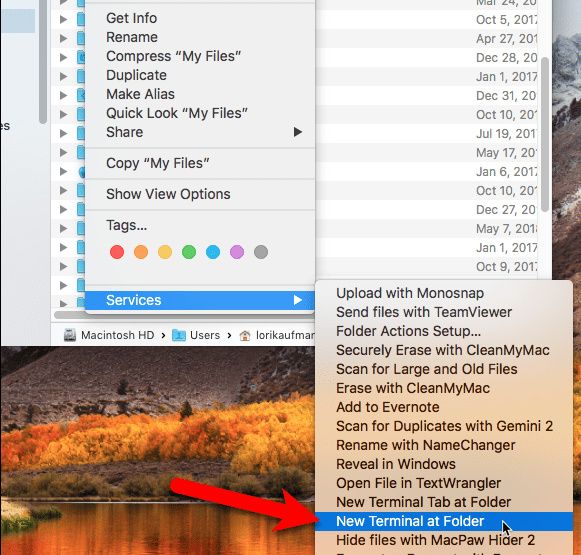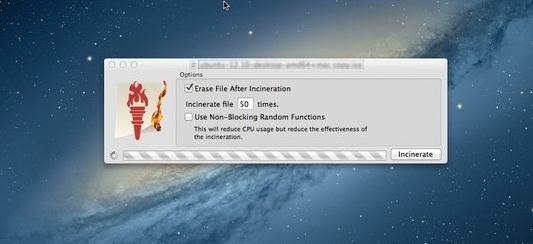Secure Delete App Mac
Shared Macs will invariably have multiple user accounts, and sometimes there are cases where you’ll want to delete a user account but keep the others. The reasons can be varied, but the good news is that it's super-easy to do if you are an administrator user, which is the only user with such privileges. Do note, however, that the process is irreversible.
If the application is still installed do this: From the Finder go to the Applications folder. Look for the Cisco folder and open it Then double click on Uninstall Anyconnect to start the uninstall process. How can I securely delete a Profile on my macbook pro? Macpro, Mac OS X (10.5.7) Posted on May 26, 2009 11:08 AM.


The advantage of having multiple users is that every person can customize the machine’s settings and options to their own personal tastes without affecting the others. Each user has their own home folder and, of course, the files and settings they save are kept in their own folders.
The method we will cover will remove any type of account, be it administrator, basic account or even a group. It's important to remember that by removing the user the account owner will no longer be able log in and that their files will be deleted unless you choose otherwise, so pay attention to the options macOS gives you when proceeding with secure removal.
Download CleanMyMac X from MacPaw’s website and clean up to 500MB of junk data from your computer while enjoying all the features of the software without major limitations.
How to Delete User Accounts
Creating a backup of the Mac before deleting the user is extremely helpful to allow you to restore it – and with it the user account – if you change your mind later on. When ready, follow the steps described below:
- Launch System Preferences.
- Click on the Users & Groups panel.
- Click on the lock located in the bottom left and authenticate as an administrator (you'll need this to be able to take any further steps).
- Select the user account you want to remove.
- Click on the minus button [-], or press the Delete key with the user account selected.
- macOS will present three options. Read them carefully, and make the decision that applies to your current situation:
- Save the home folder to a disk image – a disk image will be saved in the Delete Users folders.
- Keep the user's home folder in the /Users directory.
- Delete the home folder – you'll completely remove the user and their files. In earlier versions of macOS, Apple offered the option to erase the home folder securely.
- Pick the option that applies, and click “Delete User” to remove the account.
Don’t forget that although the user account requires a password when you create it, administrator privileges override this protection and provide you with the option to remove any user without the need for the account password.
Free Up Disk Space by Removing the Home Folder
Removing a user will also free up some space on the Mac, so if you are running out of storage it's recommended to remove any user accounts you don't need. Keeping the home folder, however, will still burden the Mac's disk space, so if you are trying to save space then it is recommended that you remove it.
The Time Machine backup before the removal process will make file recovery easier, but if you are looking to speed your Mac up then you're making the right choice about freeing up space. A Mac needs roughly 20% of total storage free for optimal performance.
If the available disk space is lower than that, users will notice performance lags immediately. Running a Mac optimization app such as CleanMyMac will give a performance boost by eliminating all the junk data that users leave behind, so having this utility at hand is always welcome.
Best Mac Optimization Software of 2021

| Rank | Company | Info | Visit |
| |||
| |||
|
Get the Best Deals on Mac Optimization Software
Stay up to date on the latest tech news and discounts on Mac optimization software with our monthly newsletter.
Secure Delete App Mac Os
| This article refers to the Cisco AnyConnect VPN. If you're looking for information on the Prisma Access VPN Beta that uses the GobalConnect app, see: Prisma Access VPN Beta Landing Page. If you're not sure which service you're using, see: How do I know if I'm using the Cisco AnyConnect VPN or the Prisma Access VPN Beta? |
Q: How do I uninstall Cisco Anyconnect VPN Client on Mac OS X?
Answer
If the application is still installed do this:
- From the Finder go to the Applications folder.
- Look for the Cisco folder and open it
- Then double click on Uninstall Anyconnect to start the uninstall process
- Follow instructions to uninstall VPN program
Here's the procedure for manually uninstalling the AnyConnect client from a Mac OS X system.
As root, run the following shell script from the Terminal:

You will be prompted for your password. Once you enter it, just follow the steps
If you still having trouble and/or the new Cisco Anyconnect installation complains that you have a version installed, follow these steps:
Mac Secure Delete Trash
Enter these commands to clean out the old Cisco VPN kernel extension and reboot the system.
If you installed the Cisco VPN for Mac version 4.1.08005 package, enter these commands to delete the misplaced files. The deletion of these files will not affect your system, since applications do not use these misplaced files in their current location.
Secure Delete App Mac Download
Enter these commands if you no longer need the old Cisco VPN Client or Shimo.
Secure Delete App Mac Ios
Finally this.